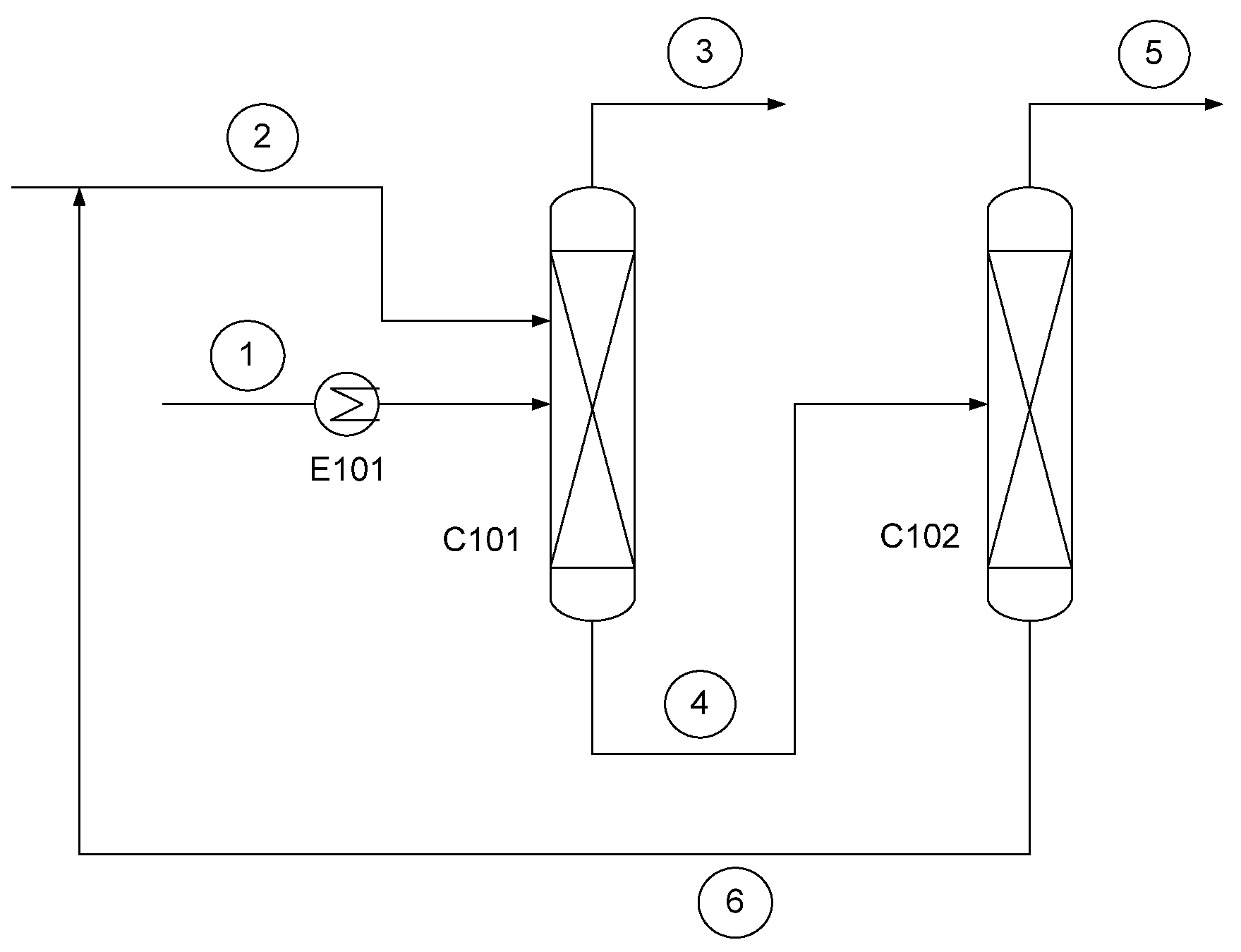Process for the removal of contaminant from a hydrochlorofluoroolefin by extractive distillation
- Summary
- Abstract
- Description
- Claims
- Application Information
AI Technical Summary
Benefits of technology
Problems solved by technology
Method used
Image
Examples
example 2
[0042]The equipment described above in Comparative Example 1 was used to undertake an extractive distillation using trichloroethylene (TCE) as an extractive solvent. The 1233zd(E) feed stream (Stream 1) was fed at a rate of 20 pounds per hour, the TCE feed stream (Stream 2) was fed at a rate of 30 pounds per hour, the overhead distillate stream (Stream 3) rate was 18 pounds per hour and the bottoms stream (Steam 4) flow rate was 32 pounds per hour. The reflux rate was 100 pounds per hour and the column pressure was 36 psig. At the time samples were taken for analysis, the reboiler temperature was 114.6° C. and the top of the column below the condenser was 53° C. The volumetric capacity of the reboiler was about 40 pounds of liquid TCE, which made a steady state difficult to achieve in a reasonable run time. The extraction solvent to 1233zd(E) weight ratio was 1.5 to 1. The 1233zd feed point was at the center of the column through a steam heated heat exchanger. The TCE solvent was fe...
PUM
| Property | Measurement | Unit |
|---|---|---|
| boiling point | aaaaa | aaaaa |
| boiling point | aaaaa | aaaaa |
| weight ratio | aaaaa | aaaaa |
Abstract
Description
Claims
Application Information
 Login to View More
Login to View More - R&D
- Intellectual Property
- Life Sciences
- Materials
- Tech Scout
- Unparalleled Data Quality
- Higher Quality Content
- 60% Fewer Hallucinations
Browse by: Latest US Patents, China's latest patents, Technical Efficacy Thesaurus, Application Domain, Technology Topic, Popular Technical Reports.
© 2025 PatSnap. All rights reserved.Legal|Privacy policy|Modern Slavery Act Transparency Statement|Sitemap|About US| Contact US: help@patsnap.com


